Volunteer Scouters
Thousands of volunteer leaders, both men and women, are involved in the Boy
Scouting program. They serve in a variety of jobs—everything from unit leaders
to chairmen of troop committees, committee members, merit badge counselors, and
chartered organization representatives.
Like other phases of the program, Boy Scouting is made available to 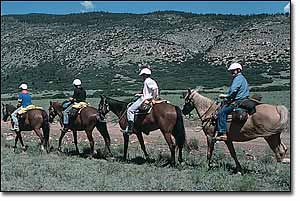 community
organizations having similar interests and goals. Chartered organizations
include professional organizations; governmental bodies; and religious,
educational, civic, fraternal, business, labor, and citizens' groups. Each
organization appoints one of its members as the chartered organization
representative. The organization is responsible for leadership, the meeting
place, and support for troop activities.
community
organizations having similar interests and goals. Chartered organizations
include professional organizations; governmental bodies; and religious,
educational, civic, fraternal, business, labor, and citizens' groups. Each
organization appoints one of its members as the chartered organization
representative. The organization is responsible for leadership, the meeting
place, and support for troop activities.
Who Pays for It?
Several groups are responsible for supporting Boy Scouting: the boy and his
parents, the troop, the chartered organization, and the community. Boys are
encouraged to earn money whenever possible to pay their own expenses, and they
also contribute dues to their troop treasuries to ay for budgeted items. Troops
obtain additional income by working on approved money-earning projects. The
community, including parents, supports Scouting through the United Way, Friends
of Scouting campaigns, bequests, and special contributions to the BSA local
council. This income provides leadership training, outdoor programs, council
service centers and other facilities, and professional service for units.
Aims and Methods of the Scouting Program
The Scouting program has three specific objectives, commonly referred to as
the "Aims of Scouting." They are character development, citizenship
training, and personal fitness.
The methods by which the aims are achieved are listed below in random order
to emphasize the equal importance of each.
Ideals. The ideals of Boy Scouting are spelled out in the Sccout Oath,
the Scout Law, the Scout Motto, and the Scout Slogan. The Boy Scout
measures himself against these ideals and continually tries to improve. The
goals are high, and as he reaches for them, he has some control over what and
who he becomes.
 Patrols. The patrol method gives Boy Scouts an experience in group
living and participating citizenship. It places responsibility on young
shoulders and teaches boys how to accept it. The patrol method allows Scouts to
interact in small groups where members can easily relate to each other. These
small groups determine troop activities through elected representatives.
Patrols. The patrol method gives Boy Scouts an experience in group
living and participating citizenship. It places responsibility on young
shoulders and teaches boys how to accept it. The patrol method allows Scouts to
interact in small groups where members can easily relate to each other. These
small groups determine troop activities through elected representatives.
Outdoor Programs. Boy Scouting is designed to take place outdoors. It
is in the outdoor setting that Scouts share responsibilities and learn  to live
with one another. In the outdoors the skills and activities practiced at troop
meetings come alive with purpose. Being close to nature helps Boy Scouts gain an
appreciation for the beauty of the world around us. The outdoors is the
laboratory in which Boy Scouts learn ecology and practice conservation of
nature's resources.
to live
with one another. In the outdoors the skills and activities practiced at troop
meetings come alive with purpose. Being close to nature helps Boy Scouts gain an
appreciation for the beauty of the world around us. The outdoors is the
laboratory in which Boy Scouts learn ecology and practice conservation of
nature's resources.
Advancement. Boy Scouting provides a series of surmountable obstacles
and steps in overcoming them through the advancement method. The Boy Scout plans
his advancement and progresses at his own pace as he meets each challenge.  The
Boy Scout is rewarded for each achievement, which helps him gain
self-confidence. The steps in the advancement system help a Boy Scout grow in
self-reliance and in the ability to help others.
The
Boy Scout is rewarded for each achievement, which helps him gain
self-confidence. The steps in the advancement system help a Boy Scout grow in
self-reliance and in the ability to help others.
Associations With Adults. Boys learn a great deal by watching how
adults conduct themselves. Scout leaders can be positive role models for the
members of the troop. In many cases a Scoutmaster who is willing to listen to
boys, encourage them, and take a sincere interest in them can make a profound
difference in their lives.
Personal Growth. As Boy Scouts plan their activities and progress
toward their goals, they experience personal growth. The Good Turn concept is a
major part of the personal growth method of Boy Scouting. Boys grow as they
participate in community service projects and do Good Turns for others. Probably
no device is as successful in developing a basis for personal growth as the
daily Good Turn. The religious emblems program also is a large part of the
personal growth method. Frequent personal conferences with his Scoutmaster help
each Boy Scout to determine his growth toward Scouting's aims.
Leadership Development. The Boy Scout program encourages boys to learn
and practice leadership skills. Every Boy Scout has the opportunity to
participate in both shared and total leadership situations. Understanding the
concepts of leadership helps a boy  accept the leadership role of others and
guides him toward the citizenship aim of Scouting.
accept the leadership role of others and
guides him toward the citizenship aim of Scouting.
Uniform. The uniform makes the Boy Scout troop visible as a force for
good and creates a positive youth image in the community. Boy Scouting is an
action program, and wearing the uniform is an action that shows each Boy Scout's
commitment to the aims and purposes of Scouting. The uniform gives the Boy Scout
identity in a world brotherhood of youth who believe in the same ideals. The
uniform is practical attire for Boy Scout activities and provides a way for Boy
Scouts to wear the badges that show what they have accomplished.
Boy Scout Oath, Law, Motto, and Slogan
Scout Oath (or Promise)
- On my honor I will do my best
- To do my duty to God and my country
- and to obey the Scout Law;
- To help other people at all times;
- To keep myself physically strong,
- mentally awake, and morally straight.
-

Scout Law
- TRUSTWORTHY
- A Scout tells the truth. He keeps his promises. Honesty is part of his
code of conduct. People can depend on him.
 LOYAL
LOYAL
- A Scout is true to his family, Scout leaders, friends, school, and nation.
- HELPFUL
- A Scout is concerned about other people. He does things willingly for
others without pay or reward.
-
- FRIENDLY
- A Scout is a friend to all. He is a brother to other Scouts. He seeks to
understand others. He respects those with ideas and customs other than his
own.
 COURTEOUS
COURTEOUS
- A Scout is polite to everyone regardless of age or position. He knows good
manners make it easier for people to get along together.
-
- KIND
- A Scout understands there is strength in being gentle. He treats others as
he wants to be treated. He does not hurt or kill harmless things without
reason.
- OBEDIENT
- A Scout follows the rules of his family, school, and troop. He obeys the
laws of his community and country. If he thinks these rules and laws are
unfair, he tries to have them changed in an orderly manner rather than
disobey them.
 CHEERFUL
CHEERFUL
- A Scout looks for the bright side of things. He cheerfully does tasks that
come his way. He tries to make others happy.
- THRIFTY
- A Scout works to pay his way and to help others. He saves for unforeseen
needs. He protects and conserves natural resources. He carefully uses time
and property.
-
 BRAVE
BRAVE
- A Scout can face danger even if he is afraid. He has the courage to stand
for what he thinks is right even if others laugh at or threaten him.
-
-
- CLEAN
- A Scout keeps his body and mind fit and clean. He goes around with those
who believe in living by these same ideals. He helps keep his home and
community clean.
 REVERENT
REVERENT
- A Scout is reverent toward God. He is faithful in his religious duties. He
respects the beliefs of others.
Scout Motto
- Be Prepared
Scout Slogan
- Do a Good Turn Daily
Outdoor Activities
Local councils operate and maintain Scout camps. The National  Council
operates high-adventure areas at Philmont Scout Ranch in New Mexico, the
Northern Tier National High Adventure Program in Minnesota and Canada, and the
Florida National High Adventure Sea Base in the Florida Keys. About 70 councils
also operate high-adventure programs.
Council
operates high-adventure areas at Philmont Scout Ranch in New Mexico, the
Northern Tier National High Adventure Program in Minnesota and Canada, and the
Florida National High Adventure Sea Base in the Florida Keys. About 70 councils
also operate high-adventure programs.
The BSA conducts a national Scout jamboree every four years and participates
in world Scout jamborees (also held at four-year intervals). Fort A.P. Hill,
Virginia, was the site of the 1997 National Scout Jamboree.
The Beginning of Scouting
Scouting, as known to millions of youth and adults, evolved during the early
1900s through the efforts of several men dedicated to bettering youth. These
pioneers of the program conceived outdoor activities that developed skills in
young boys and gave them a sense of enjoyment, fellowship, and a code of conduct
for everyday living.
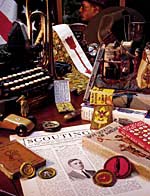
In this country and abroad at the turn of the century, it was thought that
children needed certain kinds of education that the schools couldn't or didn't
provide. This led to the formation of a variety of youth groups, many with the
word "Scout" in their names. For example, Ernest Thompson Seton, an
American naturalist, artist, writer, and lecturer, originated a group called the
Woodcraft Indians and in 1902 wrote a guidebook for boys in his organization
called the Birch Bark Roll. Meanwhile in Britain, Robert Baden-Powell, after
returning to his country a hero following military service in Africa, found boys
reading the manual he had written for his regiment on stalking and survival in
the wild. Gathering ideas from Seton, America's Daniel Carter Beard, and other
Scoutcraft experts, Baden-Powell rewrote his manual as a nonmilitary skill book,
which he titled Scouting for Boys. The book rapidly gained a wide readership in
England and soon became popular in the United States. In 1907, when Baden-Powell
held the first campout for Scouts on Brownsea Island off the coast of England,
troops were spontaneously springing up in America.
William D. Boyce, a Chicago publisher, incorporated the Boy Scouts of America
in 1910 after meeting with Baden-Powell. (Boyce was inspired to meet with the
British founder by an unknown Scout who led him out of a dense London fog and
refused to take a tip for doing a Good Turn.) Immediately after its
incorporation, the BSA was assisted by officers of the YMCA in organizing a task
force to help community organizations start and maintain a high-quality Scouting
program. Those efforts climaxed in the organization of the nation's first Scout
camp at Lake George, New York, directed by Ernest Thompson Seton. Beard, who had
established another youth group, the Sons of Daniel Boone (which he later merged
with the BSA), provided assistance. Also on hand for this historic event was
James E. West, a lawyer and an advocate of children's rights, who later would
become the first professional Chief Scout Executive of the Boy Scouts of
America. Seton became the first volunteer national Chief Scout, and Beard, the
first national Scout Commissioner.
Publications
The BSA publishes the Boy Scout Handbook (more than 37 million copies
of which have been printed); the Junior Leader Handbook, which offers
information relevant to boy leadership;
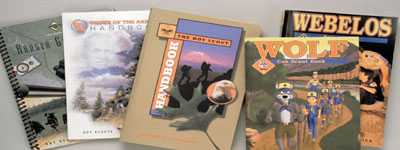
the Scoutmaster Handbook; more
than 100 merit badge pamphlets dealing with hobbies, vocations, and advanced
Scoutcraft; and program features and various kinds of training, administrative,
and organizational manuals for adult volunteer leaders and Boy Scouts. In a
ddition, the BSA publishes Boys' Life magazine, the national magazine for
all boys (magazine circulation is more than 1.3 million) and Scouting
magazine for volunteers, which has a circulation of 900,000.

Conservation
Conservation activities supplement the program of Boy Scout advancement,
summer camp, and outdoor activities and teaches young people to better
understand their interdependence with the environment.
Para comunicarse con el Jefe de Tropa:
kilimikmdq@hotmail.com
Para comunicarse con el Sub-Jefe de Tropa:
For more information contact Leader Troop: kilimikmdq@hotmail.com
For more information contact Sub-Leader Troop:


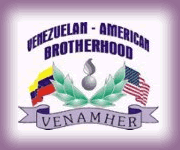
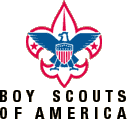










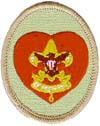

 community
organizations having similar interests and goals. Chartered organizations
include professional organizations; governmental bodies; and religious,
educational, civic, fraternal, business, labor, and citizens' groups. Each
organization appoints one of its members as the chartered organization
representative. The organization is responsible for leadership, the meeting
place, and support for troop activities.
community
organizations having similar interests and goals. Chartered organizations
include professional organizations; governmental bodies; and religious,
educational, civic, fraternal, business, labor, and citizens' groups. Each
organization appoints one of its members as the chartered organization
representative. The organization is responsible for leadership, the meeting
place, and support for troop activities. Patrols. The patrol method gives Boy Scouts an experience in group
living and participating citizenship. It places responsibility on young
shoulders and teaches boys how to accept it. The patrol method allows Scouts to
interact in small groups where members can easily relate to each other. These
small groups determine troop activities through elected representatives.
Patrols. The patrol method gives Boy Scouts an experience in group
living and participating citizenship. It places responsibility on young
shoulders and teaches boys how to accept it. The patrol method allows Scouts to
interact in small groups where members can easily relate to each other. These
small groups determine troop activities through elected representatives. to live
with one another. In the outdoors the skills and activities practiced at troop
meetings come alive with purpose. Being close to nature helps Boy Scouts gain an
appreciation for the beauty of the world around us. The outdoors is the
laboratory in which Boy Scouts learn ecology and practice conservation of
nature's resources.
to live
with one another. In the outdoors the skills and activities practiced at troop
meetings come alive with purpose. Being close to nature helps Boy Scouts gain an
appreciation for the beauty of the world around us. The outdoors is the
laboratory in which Boy Scouts learn ecology and practice conservation of
nature's resources. The
Boy Scout is rewarded for each achievement, which helps him gain
self-confidence. The steps in the advancement system help a Boy Scout grow in
self-reliance and in the ability to help others.
The
Boy Scout is rewarded for each achievement, which helps him gain
self-confidence. The steps in the advancement system help a Boy Scout grow in
self-reliance and in the ability to help others. accept the leadership role of others and
guides him toward the citizenship aim of Scouting.
accept the leadership role of others and
guides him toward the citizenship aim of Scouting.
 LOYAL
LOYAL
 COURTEOUS
COURTEOUS
 CHEERFUL
CHEERFUL
 BRAVE
BRAVE
 REVERENT
REVERENT
 Council
operates high-adventure areas at Philmont Scout Ranch in New Mexico, the
Northern Tier National High Adventure Program in Minnesota and Canada, and the
Florida National High Adventure Sea Base in the Florida Keys. About 70 councils
also operate high-adventure programs.
Council
operates high-adventure areas at Philmont Scout Ranch in New Mexico, the
Northern Tier National High Adventure Program in Minnesota and Canada, and the
Florida National High Adventure Sea Base in the Florida Keys. About 70 councils
also operate high-adventure programs.






